Instructional Series
This site will be closing soon as its content has moved to Tāhūrangi.
2024 titles are available on Tāhūrangi. Use the filters to find specific series.
Find Literacy resources at Tāhūrangi - Literacy.
Welcome to the English medium literacy instructional series teaching and learning resources for years 1 to 8.
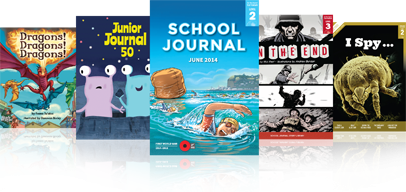
- Gold
- Blue
- Green
- Orange
- Red
- Turquoise
- Yellow
- 4
- 2
- 3
- 1
- 4
- 8
- 6
- 7
- 5
- 3
- 2
- 1
- Social Sciences
- English
- Health and Physical Education
- Science
- Technology
- The Arts
- Learning Languages
- Mathematics and Statistics
- Non-fiction
- Fiction
- None
- Living world
- Nature of science
- Articles
- Stories
- Poems
- Plays
Search results
117 items - Showing 21 - 30
-
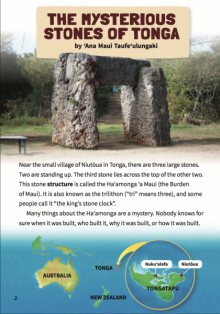
The Mysterious Stones of Tonga
by 'Ana Maui Taufe'ulungaki
illustrated by Scott Pearson
In this article, Dr ‘Ana Maui Taufe‘ulungaki describes and discusses an unusual stone monument, Ha‘amonga ‘a Maui (the Burden of Maui), which stands near the village of Niutōua in Tonga. The monument is special because there are very few stone structures to be found anywhere in the Pacific.
-
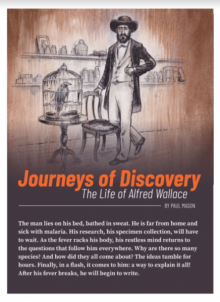
Journeys of Discovery: The Life of Alfred Wallace
by Paul Mason
illustrations by Gavin Mouldey
The naturalist Alfred Wallace and his close association with the theory of evolution is little known – most people think of Charles Darwin. Yet Wallace’s story is a classic one of adventure, talent, and persistence before he was able to offer one of the most ground-breaking scientific theories of all time. Most readers are exposed to the work of scientists in the present day; the nineteenth-century setting of this text is an excellent way to broaden their understanding of how scientists have increased their understanding of the world over time and the major milestones along the way. This article is designed to be read alongside the fictional story “Dodinga, 1858”, written by the same author.
-
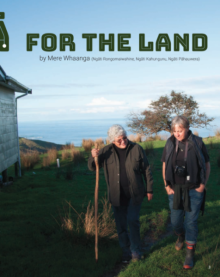
Rongoā for the Land
by Mere Whaanga
Restoring the whenua on the Māhia Peninsula
Taipōrutu is a sheep and cattle farm on the Māhia Peninsula. The land has been in the same whānau for twenty generations. It was once covered in native bush: tī kōuka, mānuka, rewarewa, tītoki, kahikatea, nīkau, and kawakawa. These species ensured the health of the land and the health of its people – but then they were cleared for farming. A few years ago, the family who owns Taipōrutu came up with a plan to restore their whenua. They called the plan Ahikāroa.
-
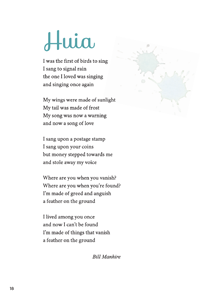
Huia
by Bill Manhire, illustration by Rachel Walker
This item complements the article about coprolites in the same Journal, providing a more emotive response to the idea that extinction is permanent – and often caused by the actions of people. The poem might be called a mōteatea – a lament.
-
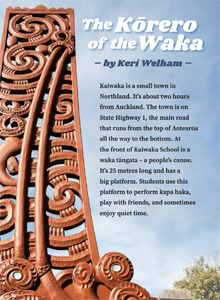
The Kōrero of the Waka
by Keri Welham
Te Waka Rangimārie o Kaiwaka is a 25-metre waka at the entrance to Kaiwaka School in Northland. The waka welcomes people to the school and is also enjoyed as a kapa haka platform, a play area, and a quiet place to sit. The focus of this article is on the whakairo (carvings) of the waka, which tell stories about the Kaiwaka area and the school community. The article includes a profile of carver Tim Codyre, who speaks of the rich and changing traditions of whakairo.
-
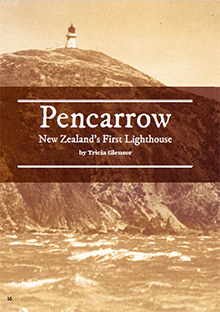
Pencarrow: New Zealand’s First Lighthouse
by Tricia Glensor
New Zealand’s coastline has always been a dangerous place for ships and boats. Early Māori knew that. Several traditional stories tell of waka being washed onto rocks in storms. Since the 1790s, when the first Pākehā reached New Zealand, more than 2,300 ships have been wrecked in New Zealand waters.
-
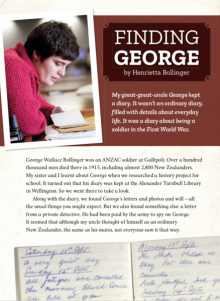
Finding George
by Henrietta Bollinger
In this powerful and moving article, Henrietta Bollinger tells the story of her great-great-uncle George, a soldier in the First World War. Most students will have learnt something about the First World War, and many will know something of their own family stories.
-
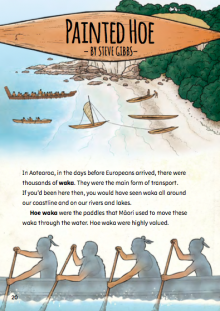
Painted Hoe
by Steve Gibbs
The first peaceful meetings between Māori and Europeans took place in 1769, when James Cook landed in the Tairāwhiti region. During those meetings, Māori traded a number of painted hoe (paddles) for cloth, seeds, potatoes, and other items. The paddles are decorated with the earliest examples of what we now call kōwhaiwhai. They ended up in museums around the world. “Painted Hoe” describes those early meetings.
-

Beyond the Reef
by Hokotehi Moriori Trust; illustrations by Laya Mutton-Rogers
This story recounts some of the reasons for Moriori migration from East Polynesia to Rēkohu/Chatham Islands. Based on Moriori oral histories handed down for hundreds of years, the story tells of Ri‘i and his family as they prepare to leave for the new lands. The piece reveals the seeds of the covenant of peace that Moriori would make after settling in Rēkohu.
-

The Waka Te Arawa in Aotearoa
by Mataia Keepa (Te Arawa, Ngāti Maniapoto, Ngāti Rārua)
This infographic illustrates some of the landing sites of the waka Te Arawa in Aotearoa New Zealand. It outlines stories associated with each site and other places that were named by people on the waka. It also describes objects and taonga that were brought on the waka such as kūmara and taininihi.




 Literacy Online home
Literacy Online home
